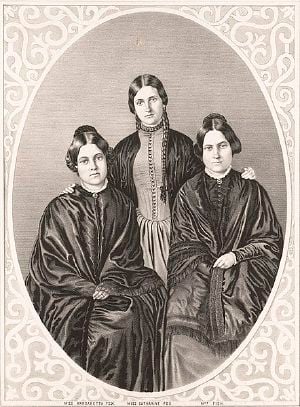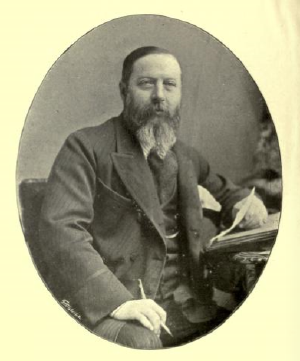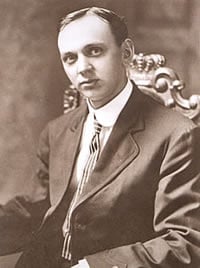In spiritualism, the term Medium refers to a person with a psychic ability to produce phenomena of a mental or physical nature by "channeling" or communicating with a spiritual entity. Mediumship involves cooperative communication between a human and one or more discarnate, spirit personalities, often during a séance. Information may be attained, paranormal activities may occur, energies may be channeled, or the spirit may manifest itself materially. Mediumship can generally be separated into two forms: Physical mediumship and mental mediumship (sometimes called "telepathic mediumship"). Trance mediumship, one of the more well known types of mediumship, often falls into the mental mediumship category. As with most paranormal phenomena, mediumship has been the subject of extreme controversy. While many alleged mediums have been revealed as frauds, there is continued, and even increasing, interest in the phenomenon and those claiming the ability, reflecting the long-standing belief that the world consists of more than that which can be known through physical senses.
History of mediumship
Human beings have attempted to contact spirits throughout most of history; shamans and witch doctors traditionally contacted spirits, and the oracles of ancient Greece were often consulted for advice; necromancy was also common. In eighteenth century Europe, Swedish scientist Emanuel Swedenborg created controversy and accusations of heresy when he rejected orthodox theology in favor of his own visions. He believed that spirits could actively help people, and that mediumship proved the existence of life after death. Swedenborg was a respected inventor and scientist, but at the age of fifty six he entered into a spiritual phase in which he experienced dreams and visions. This culminated in a spiritual awakening, and he claimed that his eyes had been opened so that from then on, he could talk freely with angels, demons, and other spirits in the afterlife.
Mediumship, however, did not gain widespread popularity until the Spiritualist Movement in the mid-nineteenth century. The birth of modern Spiritualism is often traced back to the experiences of the Fox sisters in 1848, when the two young girls claimed to have made contact with the spirit of a murdered peddler in their New York State home. The Fox sisters would regularly hold séances, and the popularity of contacting the "other side" spread like wildfire throughout the United States and parts of Europe.
From the mid 1800s through the mid 1900s, mediums and séances were extremely popular with the public. Notable figures like Andrew Jackson Davis, Daniel Dunglas Home, Helena Petrovna Blavatsky, and Arthur Conan Doyle helped give spiritualism a sense of authenticity, and séances were even held in royal palaces, the White House, and the homes of highly respectable citizens. Mediums were nearly ubiquitous throughout the United States and portions of Europe.
As spiritualism grew in popularity, organizations were formed to investigate psychic phenomena like channeling. The Society for Psychical Research, for example, was founded in 1882, and attempts to investigate paranormal phenomena in a scientific and unbiased way. The Society has mainly investigated phenomena connected with telepathy and apparitions, in the hopes of finding scientific explanations for various spiritualistic occurrences.
Types of mediumship
In modern spiritualism, mediumship can be generally divided into two forms. Physical mediumship generally involves anything happening of a physical nature that can be perceived by the medium and others present. Mental mediumship involves communication from the spirit world which is interpreted through the mind and consciousness of the medium.[1]
Mental mediumship
Mental mediumship is communication from a spirit that takes place within the medium's consciousness, without the use of any of the five physical senses. Because mental mediumship often occurs through telepathy, it is sometimes called "telepathic mediumship." The medium then relates what he/she sees, hears, or feels to the recipient, or sitter. The medium may use various states of trance to obtain this information.
Mental Mediumship comes in three main forms: Clairvoyance, Clairaudience, and Clairsentience.
Clairvoyance
Clairvoyance, or "clear seeing," is the ability to see anything which is not physically present, such as objects, animals, or people. This sight usually occurs "in the mindâs eye," and some mediums say that this is their normal vision state. Others say that they must train their minds with such practices as meditation in order to achieve this ability, and that assistance from spiritual helpers is often necessary. While some clairvoyant mediums say they can see a spirit as though the spirit had a physical body and were physically present, others say that spirits appears as a movie, television program, or photograph in their mind.
The term "clairvoyance," when used in a mediumistic sense, is often used to refer to seeing spirits and visions instilled by spirits, or, more colloquially, to refer to fortune telling. This definition is different from the official definition used by parapsychologists, which defines clairvoyance as "paranormal acquisition of information concerning an object or contemporary physical event; in contrast to telepathy, the information is assumed to derive directly from an external physical source (such as a concealed photograph), and not from the mind of another person."[2]
Clairaudience
Clairaudience, or "clear hearing," is referred to as the ability to hear spirit voices that are not audible to other people. In some cases, mediums say they hear the spirits' voices as though a person were sitting next to them. Others claim they hear spirit voices within their head/mind as more of a thought or a verbalization of a thought. In both cases, the voices are inaudible to others, even if they are seated in close proximity to the medium. The medium may also hear music or singing, in addition to spoken thought.
Clairsentience
Clairsentience, or "clear feeling," is said to be the most commonly experienced form of mental mediumship. Clairsentience is the ability to sense physical attributes of a spirit presence. The medium may feel the presence of a spirit through a touch, a smell, temperature change, or a slight breeze. Some mediums say that they will feel the ailments the spirit had while alive.
Additional categories of mental mediumship
While the previous three types of mental mediumship are the most common, many spiritualists break down types of mental mediumship even further, including categories such as "clairalience" ("clear smelling") and "clairgustance" ("clear tasting"). Smells and tastes of the deceased person's life or environment may be experienced through these types of mediumship. Mediums will sometimes examine a person's aura, a subtle field of luminous multicolored radiation surrounding a person or object as a cocoon or halo. By noting variations in the hues of a personâs aura, a medium can describe his personality, needs, and illnesses. For example, the "shriveling" of the aura is considered a sign of impending death.
Physical mediumship
Where mental mediumship generally involves communication experienced only by the medium, physical mediumship is evident to all those around the medium. Involving the manipulation of physical systems and energies, physical mediumship can include levitation, automatic writing, the moving of tables or other objects, as well as ectoplasmic activities. Physical mediumship was an important part of the Spiritualist Movement in the late eighteenth/early nineteenth centuries, where table rapping, materializations, and object manipulation were common occurrences during séances. Mediums would often [channel] a spirit, allowing the spirit to control their physical body to communicate to the living, a process different than possession, where control by a spirit is involuntary and generally unwelcome.
There are various manifestations of physical mediumship. Some of the more common types are:
Raps
Raps, also known as "percussion," were one of the first and most common types of physical mediumship, starting with the Fox Sisters in 1848. Raps and knocks could be heard coming from anywhere in the room, and were used to answer "yes" or "no" questions, or to acknowledge letters of the alphabet and laboriously spell out messages.
Ectoplasm
Ectoplasm is a substance taken from the medium's body and mixed with an etheric substance, which enables a spirit to affect physical matter. Ectoplasm is often light sensitive, and many séances were held in low light or total darkness to better observe ectoplasmic manifestations.
Levitation
Levitation, or the movement of objects without normal means of support, is said to occur due to either telekinesis or through the use of ectoplasm. While inanimate objects are the most common subjects of levitation, mediums have also been known to levitate. Daniel Dunglas Home, a Scottish medium, was famous during the 1800s for his feats of levitation. During one séance, Home appeared to leave through one third story window and levitate himself outside to enter through a second window.
Materialization
Séances have often been accompanied by the materialization of spirit hands, faces, or entire bodies, particularly during the nineteenth and early twentieth centuries. One of the most famous materializations was that of Katie King, a spirit manifested during the séances of a young English medium named Florence Cook. During Cook's sessions, Katie would materialize, hold conversations, and even allow herself to be photographed. While William Crookes was investigating Cook's phenomena, he was able to cut off a lock of Katie's hair.
Automatic Writing
When using automatic writing to communicate with spirits, the medium generally holds a pen or pencil and, through a lack of conscious control, allows the spirit to communicate through their hand. Ouija boards may also be used. There are a vast amount of writings that claim to be spirit-written, including plays, poetry, essays, novels, and music. While some, like a novel allegedly written by a posthumous Mark Twain, appear to have little validity, others have the potential to be genuine.
Famous Mediums
- William Stainton Moses: Moses, a medium from the late nineteenth century, would hold séances during which psychic lights would appear. He also had experiences of levitation, and the appearance of scents like musk and freshly mown hay. Musical sounds would often be heard with no musical instruments in the room, as well as the materialization of luminous hands and pillars of light. Moses also produced a great number of automatic writings, including his most well known scripts, Spirit Teachings (1883) and Spirit Identity (1879).
- Fransisco (Chico) Xavier: Born in 1910, Xavier was a famous Brazilian medium, often appearing on television. He produced his first automatic writing in grade school, where he claimed that an essay was given to him by a spirit. He went on to amass an enormous number of automatic writing scripts in various scientific and literary disciplines, and is one of the world's most prolific automatic writers.
- Edgar Cayce: Cayce was an American medium during the early twentieth century. He gave an estimated 22,000 readings during his lifetime, a large portion of which dealt with requests for advice on physical health. Cayce performed readings while in a trance state, and claimed to have no knowledge of what he had said while in a trance. He also performed a number of philosophical readings, where he discussed Atlantis, reincarnation, and made predictions for the future.
- Daniel Dunglas Home: Home was one of the most well-known mediums of the nineteenth century. Scottish born, he performed a number of séances for royalty and other well-respected people. He was most famous for his levitations, one of which took place outside a third story window. Though many, including Houdini accused Home of trickery, he was never once exposed as a fraud.
In more recent times, mediums like John Edward and Colin Fry have hosted television programs instead of more traditional séances, claiming to help audience members contact deceased friends and family. Others, like Allison DuBois, use their psychic abilities to aid law enforcement in the capture of criminals. Many more modern mediums, such as Esther Hicks and Jane Roberts, have written books describing the spiritualistic material they have received during their sessions.
Mediumship: Fraud or genuine?
While many scientists and skeptics simply deny the existence of genuine mediums, arguing that individuals who claim to possess this ability are either self-deluded or charlatans who engage in cold or hot reading. Using these techniques, purported mediums ask vague questions in an attempt to elicit information from an audience member. By saying something like, "I sense a chest problem. Was there someone with a chest problem in your life?" the "medium" stands a good chance of getting "yes" for an answer.[3]
From the early days of the Spiritualism Movement, there have been individuals and groups of scientists interested in determining the validity of paranormal phenomenon like mediumship. Some, like William Crookes, who investigated Florence Cook and Daniel Dunglas Home, became convinced that such phenomenon were genuine.
On the other hand, the famed magician and escape artist Harry Houdini worked fervently to expose fraud in mediumship. It is indisputable that mediumship has a long history of fraud, aided by the human desire to contact loved ones who have passed on. Skeptic investigator Massimo Polidoro in his book Secrets of the Psychics documented the history of fraud in mediumship and spiritualistic practices as well as the psychology of psychic deception.[4] Psychologists Terence Hines in his book Pseudoscience and the Paranormal wrote:
Modern spiritualists and psychics keep detailed files on their victims. As might be expected, these files can be very valuable and are often passed on from one medium or psychic to another when one retires or dies. Even if a psychic doesn't use a private detective or have immediate access to driver's license records and such, there is still a very powerful technique that will allow the psychic to convince people that the psychic knows all about them, their problems, and their deep personal secrets, fears, and desires. The technique is called cold reading and is probably as old as charlatanism itself... If John Edward (or any of the other self-proclaimed speakers with the dead) really could communicate with the dead, it would be a trivial matter to prove it. All that would be necessary would be for him to contact any of the thousands of missing persons who are presumed deadâfamous (e.g., Jimmy Hoffa, Judge Crater) or otherwiseâand correctly report where the body is. Of course, this is never done. All we get, instead, are platitudes to the effect that Aunt Millie, who liked green plates, is happy on the other side.[5]
Despite the fact that many mediums have been successfully proven to be frauds, one cannot argue that all mediumship is a hoax.
Notes
- â Richard Stuttle, What is the difference between Physical and Mental Mediumship? Retrieved October 29, 2022.
- â Glossary of Psy: Clairvoyance Parapsychological Association. Retrieved October 29, 2022.
- â Joe Nickell, Review of Psychic Medium Van Praagh on CNN's Larry King Live Skeptical Inquirer, June 8, 1999. Retrieved October 29, 2022.
- â Massimo Polidoro, Secrets of the Psychics: Investigating Paranormal Claims (Prometheus, 2003, ISBN 978-1591020868).
- â Terence Hines, Pseudoscience and the Paranormal (Prometheus, 2003, ISBN 978-1573929790).
ReferencesISBN links support NWE through referral fees
- Cayce, Edgar. Edgar Cayce: Modern Prophet. Gramercy, 1990. ISBN 0517697025
- Hicks, Esther. The Law of Attraction: The Basics of the Teachings of Abraham. Hay House, 2006. ISBN 1401917593
- Hines, Terence. Pseudoscience and the Paranormal. Prometheus, 2003. ISBN 978-1573929790
- Moses, William Stainton. Spirit Identity. Kessinger Publishing, 2006. ISBN 1428601279
- Moses, William Stainton. Direct Spirit Writing, Psychography: A Treatise On One Of The Objective Forms Of Psychic Or Spiritual Phenomena. Kessinger Publishing, 2006. ISBN 1428611754
- Moses, William Stainton. Spirit Teachings. Kessinger Publishing, 2004. ISBN 1417908874
- Polidoro, Massimo. Secrets of the Psychics: Investigating Paranormal Claims. Prometheus, 2003. ISBN 978-1591020868
- Roberts, Jane. The Seth Material. New Awareness Network, 2001. ISBN 0971119805
- Swedenborg, Emanuel. Heaven and Hell. Swedenborg Foundation, 2001. ISBN 978-0877854760
- Xavier, Francisco C., and Andre Luiz. The Messengers. Allen Kardec Educational Society, 2005. ISBN 096499075X
External links
All links retrieved April 29, 2025.
- Florence Cook and Katie King: The story of a Spiritualist medium Mysterious People
- What Is a Medium? by James Van Praagh, Omega
- Physical Mediumship and The Survival of Consciousness Institute of Noetic Sciences (IONS), August 31, 2022
- What Is Channeling? by Helané Wahbeh, Institute of Noetic Sciences (IONS), April 6, 2021
Credits
New World Encyclopedia writers and editors rewrote and completed the Wikipedia article in accordance with New World Encyclopedia standards. This article abides by terms of the Creative Commons CC-by-sa 3.0 License (CC-by-sa), which may be used and disseminated with proper attribution. Credit is due under the terms of this license that can reference both the New World Encyclopedia contributors and the selfless volunteer contributors of the Wikimedia Foundation. To cite this article click here for a list of acceptable citing formats.The history of earlier contributions by wikipedians is accessible to researchers here:
The history of this article since it was imported to New World Encyclopedia:
Note: Some restrictions may apply to use of individual images which are separately licensed.



